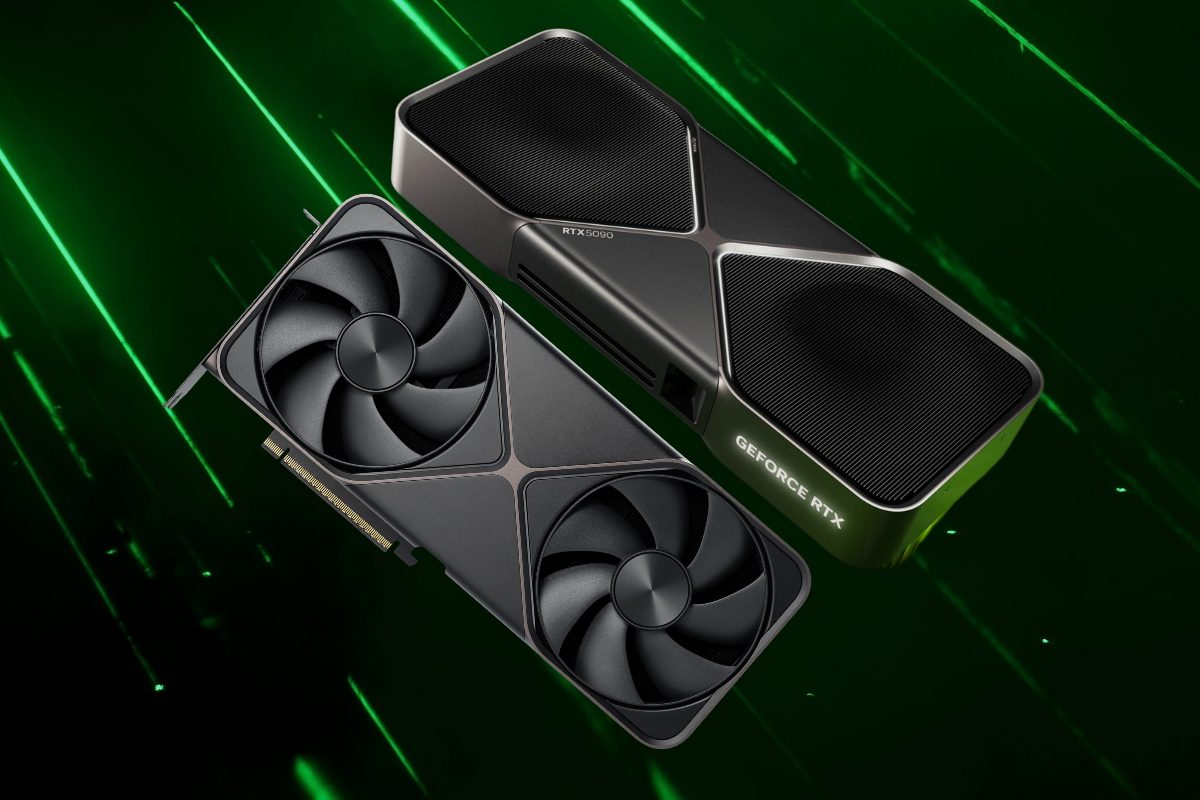A significant leak from Zotac and Acer has unveiled detailed specifications of Nvidia’s highly anticipated GeForce RTX 50 series, showcasing substantial improvements across their next-generation graphics lineup. The leak provides comprehensive information about four models: RTX 5090, RTX 5080, RTX 5070 Ti, and RTX 5070, all expected to launch in early 2025.
The flagship RTX 5090 demonstrates Nvidia’s commitment to pushing performance boundaries, featuring an impressive 192 Streaming Multiprocessors and 21,760 CUDA cores. This represents a substantial leap from its predecessor, the RTX 4090. The card will utilize 32GB of next-generation GDDR7 VRAM on a 512-bit memory bus, achieving a remarkable memory bandwidth of 1.792GB/s at 28Gbps.
Building on this foundation, the RTX 5080 positions itself as a powerful alternative with 84 Streaming Multiprocessors and 10,752 CUDA cores. The card maintains the 16GB GDDR7 VRAM configuration, albeit with a 256-bit memory bus, delivering bandwidth between 896GB/s and 1TB/s depending on final memory speeds.
Nvidia has also optimized the mid-range segment with the RTX 5070 Ti, featuring 70 Streaming Multiprocessors and 8,960 CUDA cores. This model balances performance and efficiency with 16GB of GDDR7 memory and a 256-bit bus, achieving 896.3GB/s bandwidth while maintaining a 300W power envelope.
Perhaps most notably, the RTX 5070 showcases Nvidia’s focus on mainstream gaming performance, incorporating 48 Streaming Multiprocessors and 4,608 CUDA cores. The card pairs 8GB of GDDR7 memory with a 128-bit bus, resulting in 405.8GB/s bandwidth at a more modest 50W power draw.
Technical enthusiasts have noted that the entire series will be built on TSMC’s 4NP process nodes, implementing Nvidia’s new Blackwell architecture. This technological foundation suggests significant improvements in both performance and power efficiency compared to the current generation.
The memory specifications across the lineup indicate Nvidia’s response to increasing demands from modern games and professional applications. The implementation of GDDR7 memory technology represents a significant step forward in addressing bandwidth requirements for next-generation gaming and content creation.
Industry analysts suggest these specifications could establish new performance benchmarks in the GPU market. The combination of increased CUDA cores, advanced memory systems, and refined architecture points to substantial improvements in real-world performance, particularly in ray-tracing and AI-enhanced applications.
The tech community’s response to the RTX 50 series has been overwhelmingly positive, with social media discussions focusing on the potential impact they could have on gaming and professional workloads. Particular attention has been paid to the significant memory bandwidth improvements and increased VRAM capacities across the lineup.
As the expected early 2025 release approaches, these specifications position Nvidia to maintain its competitive edge in the high-performance graphics market. The leaked details suggest a comprehensive strategy to address various market segments while pushing the boundaries of graphics processing capabilities.
News Source: https://www.theverge.com/2025/1/2/24334642/nvidia-geforce-rtx-50-leak-lan-party









